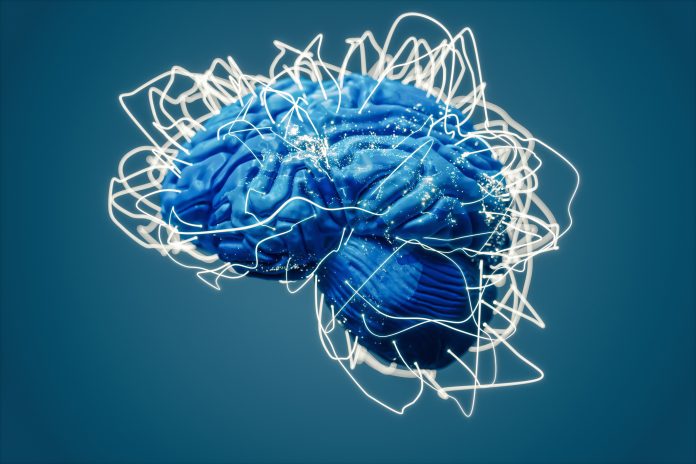Rhett Reichard, PhD and Keri C. Smith, PhD from Saba University School of Medicine, says that while multiple sclerosis is a debilitating disease, new treatments offer hope
Multiple sclerosis (MS) is a neuroinflammatory disease affecting the central nervous system (CNS), resulting in progressive loss of sensory, motor and cognitive functions. Consisting of billions of interconnected neurons, the brain and spinal cord comprises the CNS. Each neuron functions as an independent processing center that integrates input from thousands of other neurons into a single signal propagated to downstream neurons.
The brain must rapidly adapt to internal and external stimuli; it must identify the stimuli, select the appropriate response, and carry out the intended response within a matter of milliseconds! This rapid response time demands very efficient communication within and between intricate neural circuits.
Multiple sclerosis explained (MS)
Neurons receive input from thousands of other neurons at tree-like arborizations, dendrites, that contain receptors for chemical messengers, neurotransmitters, released by other neurons. Binding of neurotransmitters to cognate receptors opens distinct ion channels allowing ions to either enter or exit the neuron.
If the summated ion movement results in significant depolarization, the neuron becomes electrically excited. This results in the generation of an electrical signal called an action potential. This electrical signal is transmitted down the length of specialized neuronal processes called axons which comprise nerves/nerve fibers. For efficient processing of sensory input and fluid movement to occur, these electrical signals must propagate without interference. This is accomplished by the wrapping of nerves with myelin, specialized tissue comprised of proteins and fat. Analogous to the insulation surrounding electrical wires, the myelin sheath functions as an insulator and maintains the integrity and transmission efficacy of the electrical signals carried by nerve fibers to and from the brain.
Multiple sclerosis results in the destruction of the myelin sheath which can eventually lead to neuronal cell death. This destruction can be visualized by the formation of “lesions” – areas of inflammation and damage in different parts of the nervous system. This dramatically reduces the brain’s capacity to interpret sensory information and to carry out movement. Demyelination of the optic nerve disrupts the electrical signals conveyed from the eyes to the brain and underlies the visual disturbances associated with MS.
Similarly, demyelination of motor nerve fibers conveying signals controlling muscles results in extreme muscle weakness and reduced coordination of movement.
This progressive motor loss can make normal day-to-day tasks such as walking extremely difficult. People living with MS can struggle with the symptoms of their disease for many years. The recurrence and remission of symptoms, in particular, are frustrating, and people living with MS often describe their experience as “everything is hard”.
The presentation of the disease can vary between patients
The presentation of the disease can vary between patients. The rarest form of MS is the primary-progressive form, where patients experience steadily worsening symptoms from the start of disease onset, without remission. Most people diagnosed with MS have the relapsing-remitting form of the disease, where symptoms persist for a few days to a few months, then resolve for some period of time until the symptoms occur again.
Unfortunately, without effective treatment to stall the progression of the disease, most MS patients will go on to develop secondary-progressive MS, where symptoms become steadily worse without periods of remission. The goal of treatment for most forms of MS is to halt the progression from the relapsing-remitting form to the secondary progressive form.
What causes multiple sclerosis?
The cause of multiple sclerosis, unfortunately, remains elusive though most researchers believe the disease is a type of autoimmune response. One theory is that a combination of genetic susceptibility together with exposure to infectious agents leads to the development of myelin-reactive white blood cells that attack and damage the CNS.
In support of this theory, a recent study identified a strong correlation between infection with a blood-borne human herpesvirus (Epstein-Barr virus; commonly associated with mononucleosis) and subsequent development of MS. In-depth investigations of CNS lesions in MS patients have found the presence of both T cells and B cells, confirming the role of a targeted immune attack in neuronal cell damage.
Long-term disease-modifying therapies
Cutting-edge treatments for MS are classified as long-term disease-modifying therapies (DMTs). Some MS therapies are broadly anti-inflammatory, including steroid treatment and diroximel fumarate. Other biologic therapies directly target B cells, including ocrelizumab, rituximab, ofatumumab, and atacicept. Yet more DMT’s such as cladribine, alemtuzumab, and siponimod target both B and T lymphocytes.
The specific therapy that works for each MS patient is unique, and increasingly, MS specialists prescribe these medications based on individual patient profiles. Consistent use of these therapies has proven to slow the progression from relapsing-remitting to secondary progressive MS. More importantly, the anti-B cell therapy ocrelizumab has shown promise in treating refractory primary-progressive and pediatric forms of MS.
As early intervention leads to a better quality of life for people with this disease, further research is needed to target therapies more effectively for individual patients. In addition, increasing awareness of the role of viral infections, especially EBV, may also lead to the development of vaccines that may prevent triggering of the autoimmune response to myelin.








